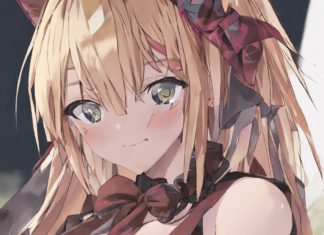Navratri, a festival dedicated to the worship of the Hindu goddess Durga, is celebrated with much fervor and enthusiasm across India. The festival spans nine days, with each day dedicated to one of the nine avatars of Goddess Durga. The seventh day of Navratri holds special significance, symbolizing the aspect of Kalratri, the fiercest form of Goddess Durga. This day is known as Saptami and is celebrated with various rituals and customs.
Significance of the Seventh Day of Navratri
Kalratri, the form of Goddess Durga worshipped on the seventh day, is believed to be the destroyer of all demon entities, ghosts, spirits, and negative energies. She is envisioned as dark as night with a fierce demeanor, symbolizing the power to protect her devotees from harm. The color associated with this day is Royal Blue, symbolizing power and protection.
Rituals and Celebrations
-
Kanya Pujan: On the seventh day of Navratri, young girls are worshipped as representatives of the goddess herself, in a ritual known as Kanya Pujan. Nine girls, representing the nine forms of Goddess Durga, are invited into the home, their feet washed, and offered a delectable meal.
-
Lighting Lamps: Lighting lamps or diyas is an integral part of the celebrations on the seventh day of Navratri. It symbolizes the triumph of light over darkness and the dispelling of negativity.
-
Chanting Mantras: Devotees chant mantras dedicated to Goddess Kalratri to seek her blessings and protection from all forms of evil and negativity.
-
Offerings: Offerings of jaggery, coconuts, and sesame seeds are made to the goddess as a part of the rituals. These offerings symbolize sweetness, fertility, and protection.
Mythological Significance
The legend of Mahishasura Mardini is associated with the seventh day of Navratri. Goddess Durga, in the form of Kalratri, is believed to have slain the demon Mahishasura on this day, signifying the victory of good over evil.
Navratri Fasting
Many devotees observe a fast on the seventh day of Navratri, consuming only fruits and milk. Fasting is believed to purify the body and mind, while also symbolizing discipline and devotion to the goddess.
Colors to Wear
Royal Blue is the color associated with the seventh day of Navratri. Wearing this color is believed to attract positive energies and invoke the protective powers of Goddess Kalratri.
Conclusion
The seventh day of Navratri, dedicated to Goddess Kalratri, holds immense significance for devotees seeking protection and strength. The rituals and celebrations associated with this day symbolize the triumph of good over evil, light over darkness, and the power of the divine feminine.
Frequently Asked Questions (FAQs)
1. What is the significance of Kanya Pujan on the seventh day of Navratri?
– Kanya Pujan is a ritual where young girls are worshipped as representatives of the goddess herself, symbolizing purity and divinity.
2. Why is Goddess Kalratri worshipped on the seventh day of Navratri?
– Goddess Kalratri is worshipped for her power to destroy negative energies and protect her devotees from harm.
3. What is the mythological significance of Mahishasura Mardini on the seventh day of Navratri?
– Goddess Durga, in the form of Kalratri, is believed to have slain the demon Mahishasura, symbolizing the victory of good over evil.
4. What are the traditional offerings made to Goddess Kalratri on the seventh day of Navratri?
– Offerings of jaggery, coconuts, and sesame seeds are made to the goddess to seek her blessings and protection.
5. Why is fasting observed on the seventh day of Navratri?
– Fasting on the seventh day of Navratri is believed to purify the body and mind, while also demonstrating discipline and devotion to the goddess.
6. What does the color Royal Blue represent on the seventh day of Navratri?
– Royal Blue is the color associated with power, protection, and invoking the energies of Goddess Kalratri.
Celebrate the seventh day of Navratri with devotion, rituals, and reverence for Goddess Kalratri, seeking her blessings and protection in your life.









